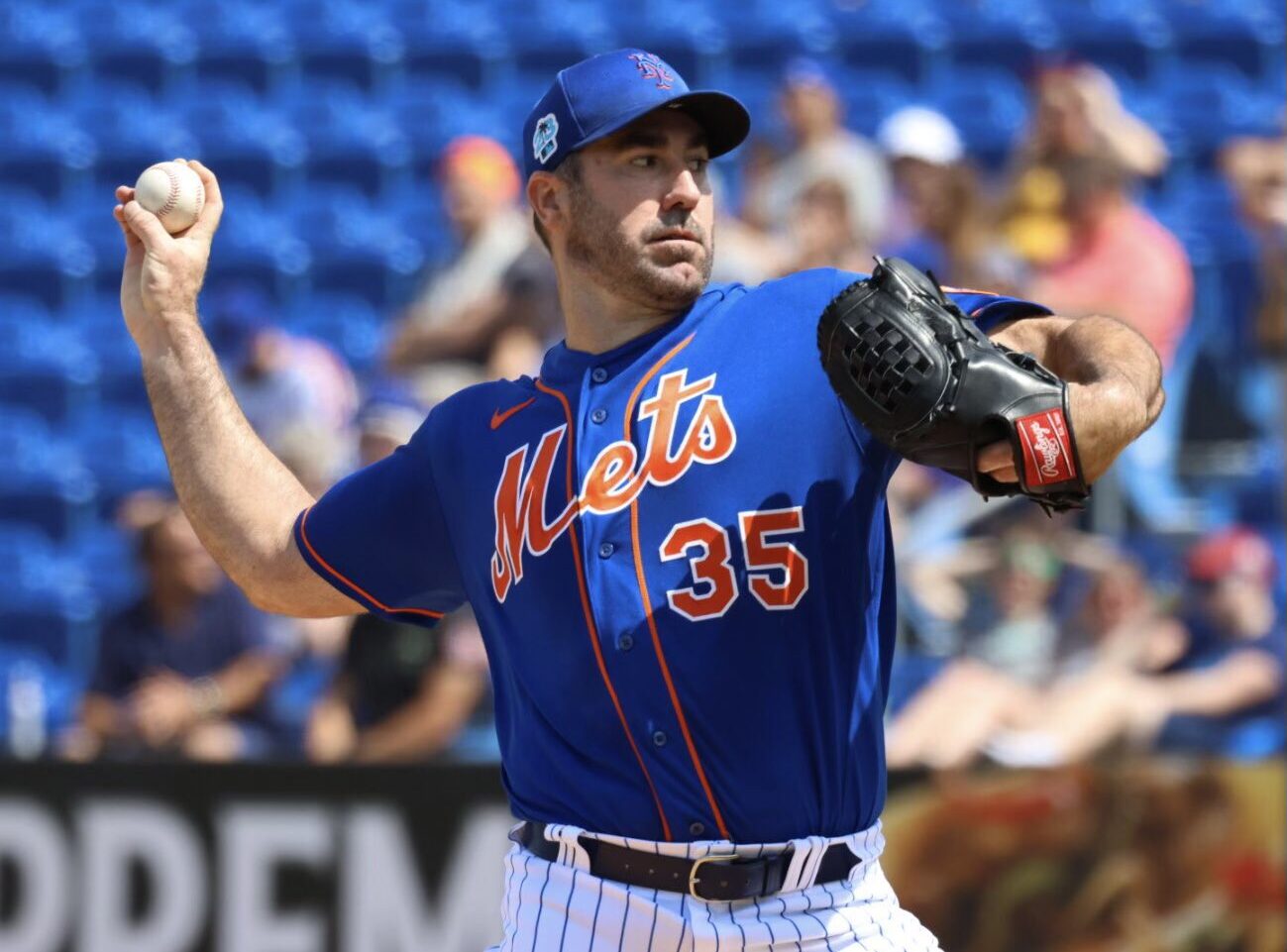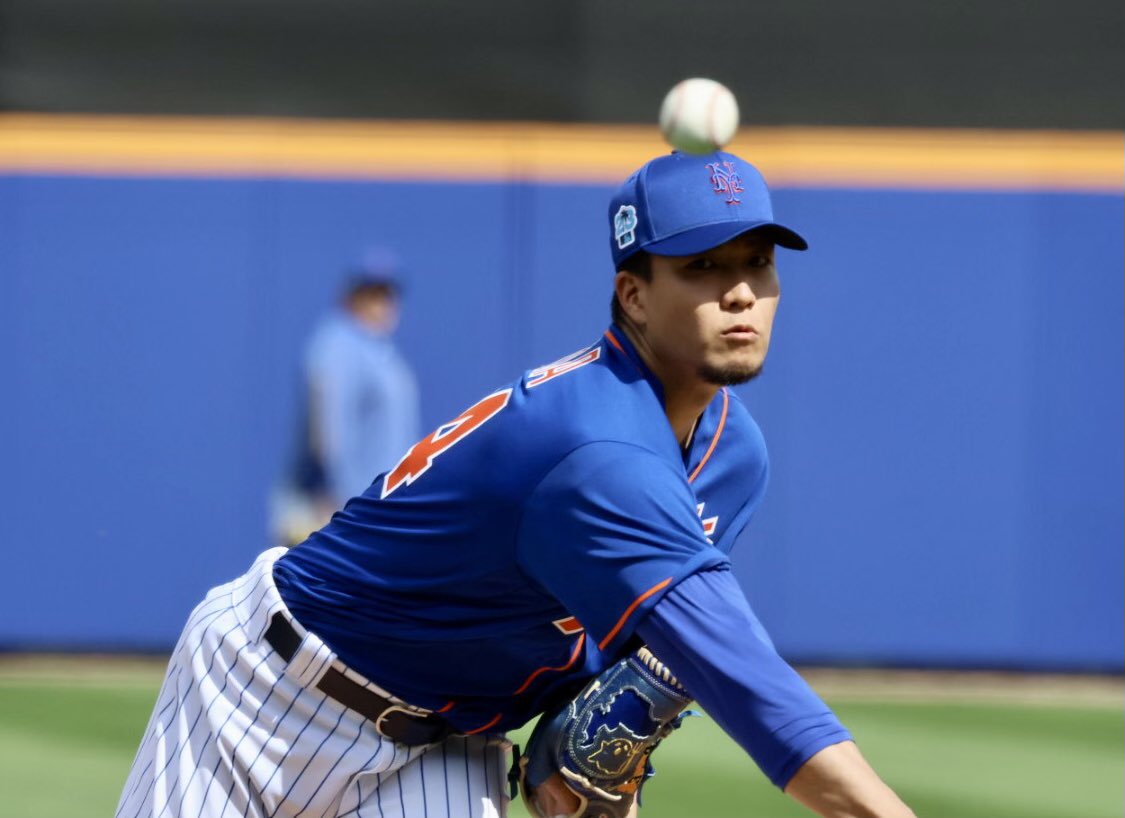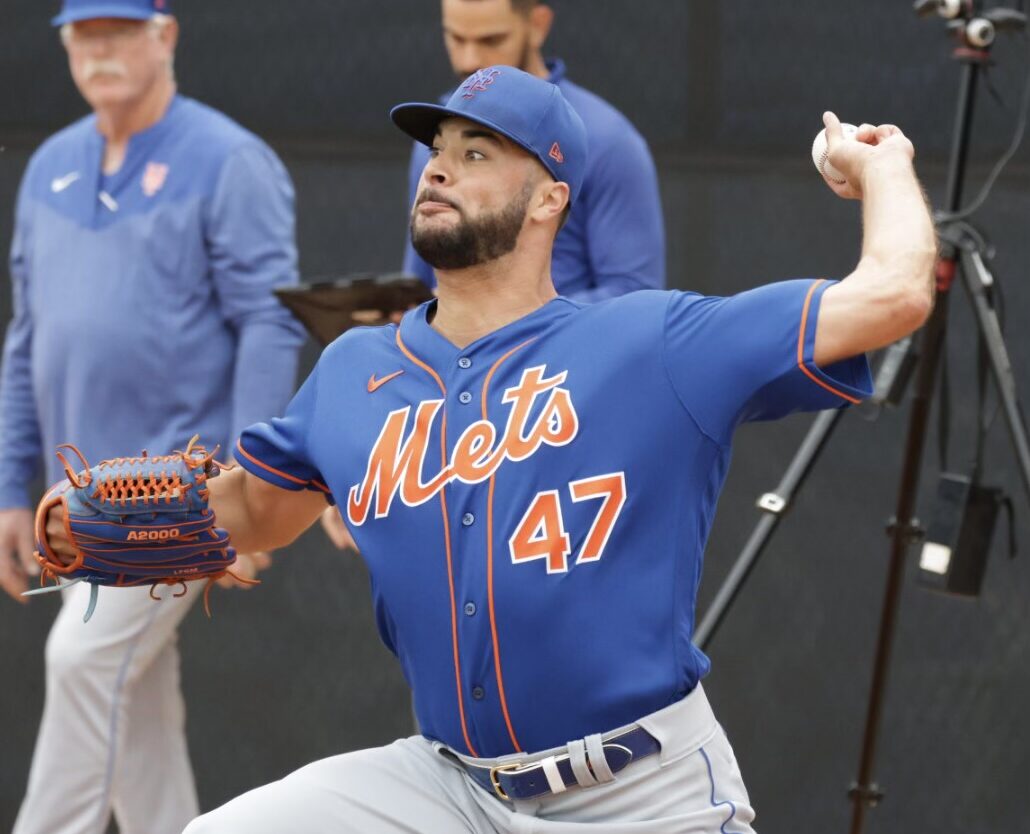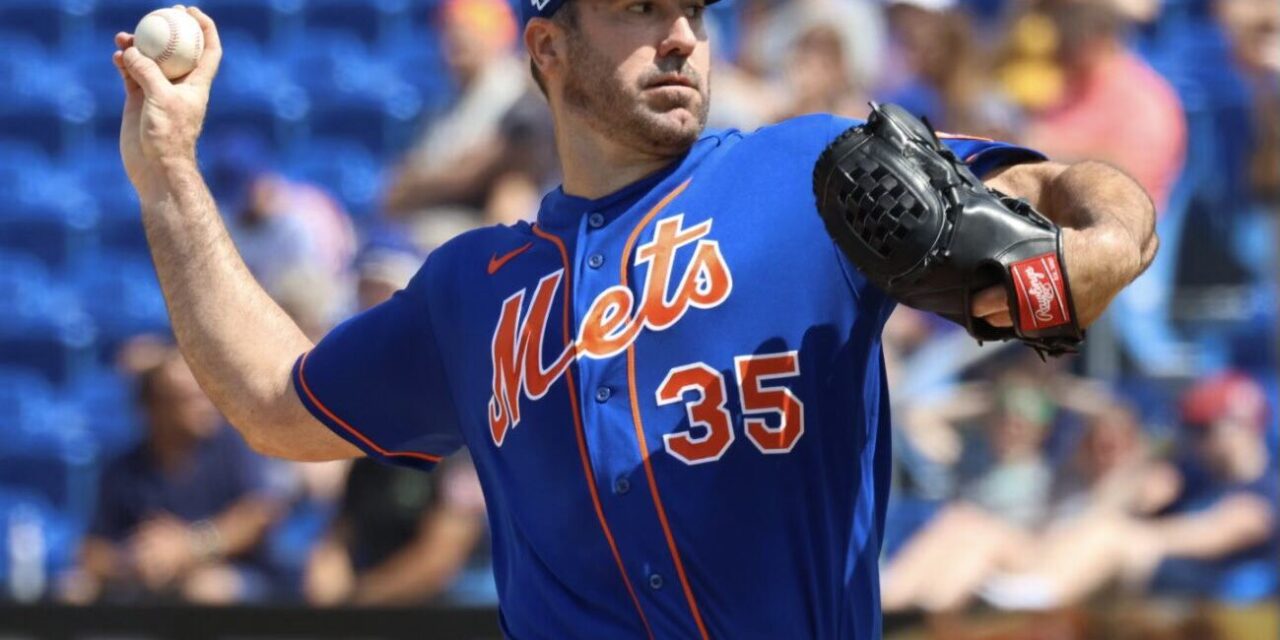
Photo by Ed Delany of Metsmerized
By Scott Engel, The Game Day
It has been a tough spring for the Mets’ pitching staff so far in terms of injuries. Yet according to former players and team executives, the starting pitching can still be the key to a National League pennant push.
I spoke with three former players and a team executive who are very optimistic about the team’s rotation because of its experience and depth.
Insider insights are featured from:
- Nelson Figueroa, former Mets pitcher and host of the “Amazin’ But True” podcast for the New York Post. WPIX TV, MLB Network
- Jerry Blevins, former Mets pitcher, and SNY analyst
- Anthony Recker, former Mets catcher, and MLB Network analyst
- Steve Phillips, former Mets GM, and SiriusXM MLB Network Radio host
2023 Mets Starting Pitching Staff: Eyes On October
Despite losing Jose Quintana to rib surgery until possibly July, the analysts I spoke to maintain that the Mets’ starting pitching can fuel a deep October run in 2023.
”One of the reasons why the Mets rotation can be so good is because of the depth,” Phillips said. “Not many teams were able to boast of having David Peterson and Tylor Megill as extra options. Both would be mid-rotation starters in a different organization.”
“I think this pitching staff has the impact arms and experience not only to win over 162 regular-season games, but they also can win in a short postseason series.”
Phillips said Max Scherzer and Justin Verlander have new goals by this point of their careers, and achieving glory in New York is now the big one. Winning a World Series with the Mets would be an outstanding and distinctive feat, even for two pitchers who have seemingly accomplished almost everything possible by now.
“Winning in New York is not like winning anywhere else, and it becomes a unique line on a player’s resume. It wouldn’t be just another championship.”
Figueroa agreed, adding that both starters have over 30 years combined experience, and that could work in their favor.
“They have done it all, and long enough to know how to pace themselves,” Figueroa said. “They were friendly competitors when they were younger, but now they are more focused on October. The bar is set higher to push this franchise to the next level. At this point of their careers, it’s a legacy thing. It’s about doing something special together.”
Blevins said that while the age factor for both pitchers has to be acknowledged, they should still be at the top of their game from a performance perspective.
“Should age be a concern for starting pitchers? Absolutely. Father Time is undefeated. Bodies age. Physical abilities diminish. But I still believe that Scherzer and Verlander will be very successful this year and probably next year.”
Phillips indicated that manager Buck Showalter may carefully manage the innings of his top two starters early in the season.
“There may be times in May, for instance, when one of the top two starters have a four-run lead after six innings, they may want to stay in the game, but Buck will make the tough decision to save pitchers and innings pitched for October,” he said.

Kodai Senga. Photo by Ed Delaney, MMO
While Scherzer and Verlander are highly proven superstars that are showing no signs of a drop-off, Kodai Senga is more of an intriguing “unknown” factor. Recker said working with Scherzer and Verlander can only help Senga make a smoother transition to the major leagues.
“I think it’ll be more about him making his own adjustments in the game (mound, ball, better players) than off the field,” Recker said. “There is of course plenty he can learn about individual hitters and their tendencies, taking the mound more often, and perhaps utilizing different technological tools. I think he’ll gain more insights from the likes of Verlander and Scherzer than his catchers. Jeremy Hefner is one of the best pitching coaches around, and I know he’ll have him prepared for every start.”
Blevins is already looking forward to seeing Senga operate. “He’s my favorite mystery of the season,” he said. “His ceiling is as a true No. 3 starter with some really dominant performances. And his floor is a long guy in the ‘pen. So there are a lot of different ways he could go. But he looks great, and I think he’ll be closer to the top of his profile.”
Both Phillips and Figueroa touted Senga’s arsenal as a gateway to him adjusting to the stateside game.
“His fastball/split combo will play well. His splitter will fade down off the plate at the bottom of the zone and hitters will chase it,” Phillips said. “He will get his fastball up in the zone in the mid-90s. He will force hitters to change their eye levels.”
“I love his upside,” Figueroa said. “He uses the upper part of the strike zone with his fastball and then he can put hitters away with his ‘ghost forkball.’ His velocity on it is enough that he will generate a lot of swings and misses.”
Quintana may not be back until after the All-Star break, but he should be worth the wait, according to the analysts I spoke to. Once he returns, Quintana should fit in as an important rotation piece.
“He is very underrated,” Blevins said. “With all of the questions and concerns about the age of two aces, the unknown outlook of Senga and Carlos Carrasco‘s recent history, Quintana feels like that solid rock of stability that is needed for this team.”
Figueroa compared Quintana to another recent and highly dependable Mets starter. “As a No. 4, I am very comfortable with him. I liken him to Taijuan Walker,” Figueroa said. “He pitches more to contact, not a major strikeout guy, but he is very efficient. He is an experienced front-end starter who would be a No. 2 or 3 on another team.”
Overall, Figueroa said, the first-half absence of Quintana should not significantly alter the starting pitching’s path to the postseason.
“I think the outlook stays the same,” Figueroa said. “The beauty of it is that you have the flexibility with Peterson and Megill. These aren’t just kids you are trying out and seeing what they can do and how long they can hold down the job. They have put up numbers in the past, especially Megill. He has that kind of stuff that you were really excited about the first two months of last year.
“Megill already having a year under his belt, working with Scherzer and deGrom before that, is a kid that has been surrounded by front-line starters long enough. With his size and ability and a velocity bump over the past season-and-a-half, I think he can go right in and do the job.”

Joey Lucchesi. Photo by Ed Delany of Metsmerized
Figueroa added that we cannot forget about Joey Lucchesi, and having three quality options behind the original projected top five starters keeps the team from having to make a trade when an injury situation pops up like it did with Quintana. Recker commended the front office for being prepared for such scenarios.
“Peterson and Megill are both very high-quality depth options,” Recker said. “This front office knows that with an aging roster and two aces reaching the back end of their careers, they need reinforcements who can deliver not just innings, but high-quality innings. This is the deepest Mets team I can remember.”
Phillips also weighed in more on the team’s impressive amount of options, without or with Quintana. “One of the reasons why the Mets rotation can be so good is because of the depth. Not many teams were able to boast of having Peterson and Megill as extra options. Both would be mid-rotation starters in a different organization. Quintana and Carrasco are predictable pitchers, you know what you get with them. They will always give their team a chance to win.”
So how good can this rotation be in 2023, especially when it counts most in the drive to the playoffs and in the postseason? Figueroa said that experience will be the big difference between this staff and the last crew of potential superstars that tasted some success in the past decade.
“Last time they had five aces, it was five unproven pitchers. You were hoping they would turn out to be aces,” Figueroa said. “This rotation is full of guys that have done it before, and there are established levels of experience and accountability. It’s also a big difference in the levels of talent around them and what the team has offensively.”
Recker said that the entire Mets pitching staff should have good clubhouse chemistry and will benefit greatly from strong leadership.
“Verlander and David Robertson bring even more experience, particularly winning experience to an already veteran room,” he said. “They also bring expectations, but in a good way. Brooks Raley brings hopefully some new thoughts and ways of approaching the game, having come over from the Rays organization. I think his physical abilities as well as his knowledge base could be great weapons for this team. Quintana provides more Latino leadership. This is a very veteran club.”
Despite the bad news that has made headlines prior to the regular season beginning, this could indeed prove to be one of the top Mets starting staffs in franchise history.
“They certainly have the potential to be one of the best ever for the Mets,” Phillips said.
















